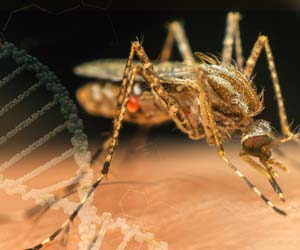Even though world leaders have just updated COP28 to call for actions to combat global warming, climate change is a major factor in the global spread of malaria. The 2023 World Malaria Report explores the nexus between climate change and malaria (
).
A significant concern in the fight against malaria is the changing climate, especially in areas that are already vulnerable. The following are a multitude of climate threats that heighten the spread of malaria.
Variations in temperature, humidity, and precipitation can affect the behavior and survival of the Anopheles mosquito, which is responsible for transmitting malaria.
Advertisement
Natural disasters like heat waves, droughts, and flooding can also have an immediate effect on the burden of disease and its transmission. For instance, Pakistan experienced catastrophic flooding in 2022, which caused the number of malaria infections to rise five-fold.
Increased malaria may also result from population relocation brought on by climate-related issues, as those lacking immunity move to disease-prevalent areas.
Climate variability is predicted to have indirect effects on malaria trends through disruptions to the supply chain of insecticide-treated nets, medications, and vaccines, as well as decreased access to vital malaria treatments.
Limited information exists regarding the long-term effects of climate change on malaria transmission. However, across social and ecological systems, both within and between nations, the direction and strength of any impacts are probably going to differ.
Global Trends of Malaria Burden
In 2022, an estimated 249 million malaria cases were reported globally, exceeding the pre-pandemic level of 233 million in 2019 by 16 million cases.
Five nations accounted for the majority of the five million extra cases of malaria that were reported globally in 2022 compared to the previous year. Pakistan experienced the biggest growth, going from 500,000 cases in 2021 to around 2.6 million cases in 2022. Significant increases were also noted in Uganda, Papua New Guinea, Ethiopia, and Nigeria.
Regions of South-East Asia, Eastern Mediterranean, Western Pacific, and the Americas report significant numbers of cases and deaths. And among them, most cases and deaths occur in sub-Saharan Africa. Children under 5 years of age are the most vulnerable group affected by malaria in the African Region.
In the meantime, after a spike during the first year of the pandemic, rates of new infections and deaths have leveled off in the 11 nations with the greatest malaria burden. With assistance from the WHO’s “High burden to high impact” approach, these nations are expected to see 426, 000 malaria deaths and 167 million cases of malaria by 2022.
Given the current trajectory, the WHO global malaria strategy’s crucial 2025 targets are far behind schedule.
In numerous nations with low malaria rates, there has also been progress made toward the eradication of the disease. Compared to just 13 nations in 2000, 34 countries reported less than 1000 cases of malaria in 2022. Azerbaijan, Belize, and Tajikistan are the three more nations that the WHO has declared as malaria-free this year alone, and several more are on course to eradicate the illness in the upcoming year.
Positive Signs to Curb Malaria
To combat malaria, there are currently anti-malarial medications, net installations, indoor pesticide spraying, and other child health treatment solutions available.
The study lists successes including the gradual introduction of RTS,S/AS01, the first malaria vaccine recommended by the WHO, in three African nations.
According to a thorough analysis, regions where the vaccine has been implemented have seen a significant decrease in severe malaria and a 13% decrease in early childhood fatalities from all causes when compared to regions where the vaccine has not been implemented.
WHO recommended R21/Matrix-M, a second safe and efficacious malaria vaccine, in October 2023. It is anticipated that the availability of two malaria vaccinations will boost supply and curb disease spread.
Towards a Malaria-Free & Climate Resilient Future
In conclusion, the malarial parasite evolves in tandem with the constantly shifting climate. Concerted efforts that foster innovation, resource mobilization, and collaborative strategies can create a sustainable malaria-free world.
References :
- Malaria – (https://www.who.int/health-topics/malaria#tab=tab_1)
- WHO’s Annual Malaria Report Spotlights the Growing Threat of Climate Change – (https://www.who.int/news/item/30-11-2023-who-s-annual-malaria-report-spotlights-the-growing-threat-of-climate-change)
Source: Medindia



